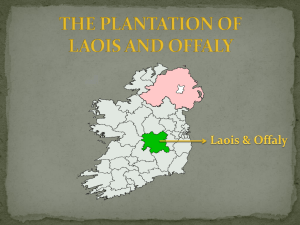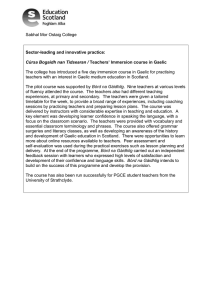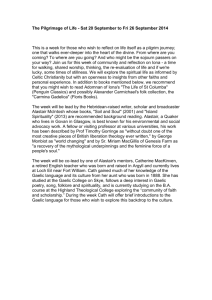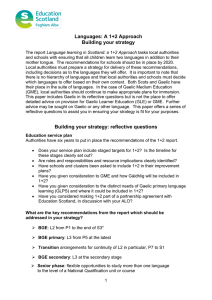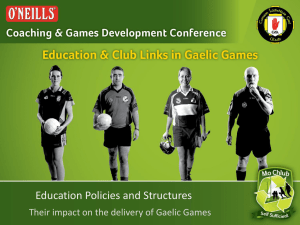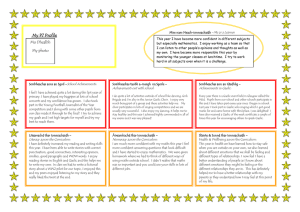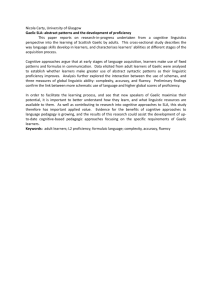The role of Gaelic Education in “Language Learning in Scotland:... 1 + 2 Approach” Introduction
advertisement
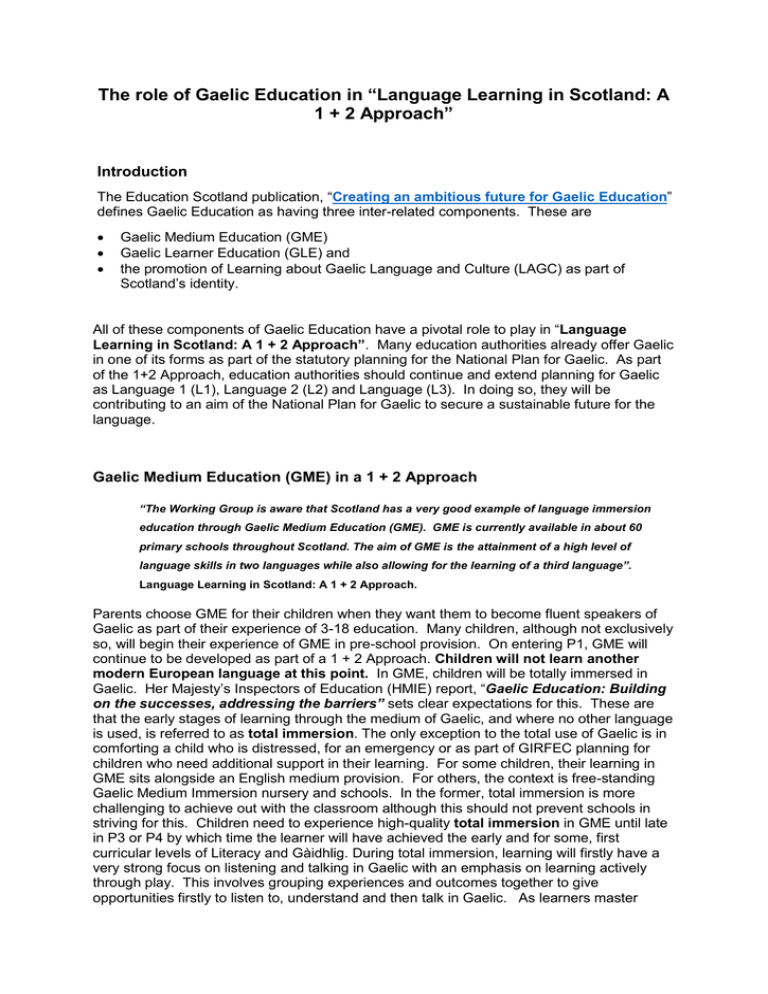
The role of Gaelic Education in “Language Learning in Scotland: A 1 + 2 Approach” Introduction The Education Scotland publication, “Creating an ambitious future for Gaelic Education” defines Gaelic Education as having three inter-related components. These are Gaelic Medium Education (GME) Gaelic Learner Education (GLE) and the promotion of Learning about Gaelic Language and Culture (LAGC) as part of Scotland’s identity. All of these components of Gaelic Education have a pivotal role to play in “Language Learning in Scotland: A 1 + 2 Approach”. Many education authorities already offer Gaelic in one of its forms as part of the statutory planning for the National Plan for Gaelic. As part of the 1+2 Approach, education authorities should continue and extend planning for Gaelic as Language 1 (L1), Language 2 (L2) and Language (L3). In doing so, they will be contributing to an aim of the National Plan for Gaelic to secure a sustainable future for the language. Gaelic Medium Education (GME) in a 1 + 2 Approach “The Working Group is aware that Scotland has a very good example of language immersion education through Gaelic Medium Education (GME). GME is currently available in about 60 primary schools throughout Scotland. The aim of GME is the attainment of a high level of language skills in two languages while also allowing for the learning of a third language”. Language Learning in Scotland: A 1 + 2 Approach. Parents choose GME for their children when they want them to become fluent speakers of Gaelic as part of their experience of 3-18 education. Many children, although not exclusively so, will begin their experience of GME in pre-school provision. On entering P1, GME will continue to be developed as part of a 1 + 2 Approach. Children will not learn another modern European language at this point. In GME, children will be totally immersed in Gaelic. Her Majesty’s Inspectors of Education (HMIE) report, “Gaelic Education: Building on the successes, addressing the barriers” sets clear expectations for this. These are that the early stages of learning through the medium of Gaelic, and where no other language is used, is referred to as total immersion. The only exception to the total use of Gaelic is in comforting a child who is distressed, for an emergency or as part of GIRFEC planning for children who need additional support in their learning. For some children, their learning in GME sits alongside an English medium provision. For others, the context is free-standing Gaelic Medium Immersion nursery and schools. In the former, total immersion is more challenging to achieve out with the classroom although this should not prevent schools in striving for this. Children need to experience high-quality total immersion in GME until late in P3 or P4 by which time the learner will have achieved the early and for some, first curricular levels of Literacy and Gàidhlig. During total immersion, learning will firstly have a very strong focus on listening and talking in Gaelic with an emphasis on learning actively through play. This involves grouping experiences and outcomes together to give opportunities firstly to listen to, understand and then talk in Gaelic. As learners master these skills, they will then be introduced to reading and writing in Gaelic. In doing this, groupings of experiences and outcomes will be revisited to include developing reading and writing. Over time, as learners become secure in their fluency of Gaelic, all skills will be developed together in an integrated way, using grouping of experiences and outcomes. This will include a range of approaches to learning and teaching, for example, play, projects and role-play. This makes GME Language 1 for this group of learners. The aforementioned HMI report refers to the next stage of learning in GME as being the immersion phase. In this, the curriculum in its entirety continues to be taught through the medium of Gaelic across all four aspects of learning. Teachers’ monitoring and tracking of progress and achievement should confirm that children now have a secure base in Gaelic language to transfer to developing reading and writing skills in English language. Children in GME are now operating in two languages – Gaelic and English. Learners may apply further and extend their knowledge and language skills through partnership with fluent speakers, other schools, colleges, community learning and development, Gaelic groups and groups with a Gaelic interest. Accessing fluent, authentic and idiomatic Gaelic adds a rich dimension to learners’ experiences which in turn provides them with challenge. This affords an opportunity for learners to apply their learning of Gaelic in more complex contexts which also develop their skills for life and work, such as working with others, solving problems and presenting information. In P5, children learning in GME will be introduced to a modern language. This will be their Language 3 (L3). In doing so, the earlier advice in this framework applies but recognises that children have skills to transfer from GME and that approaches to learning will be for older children.

